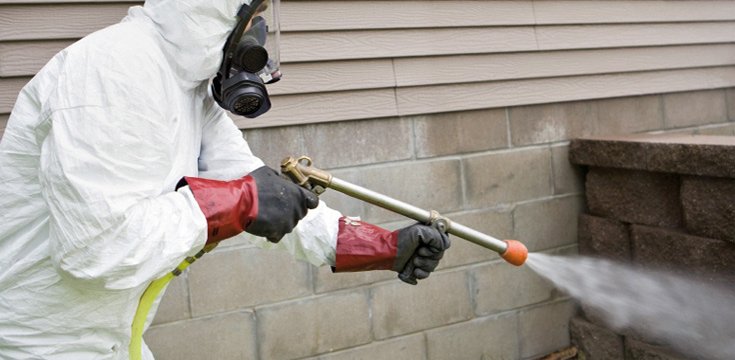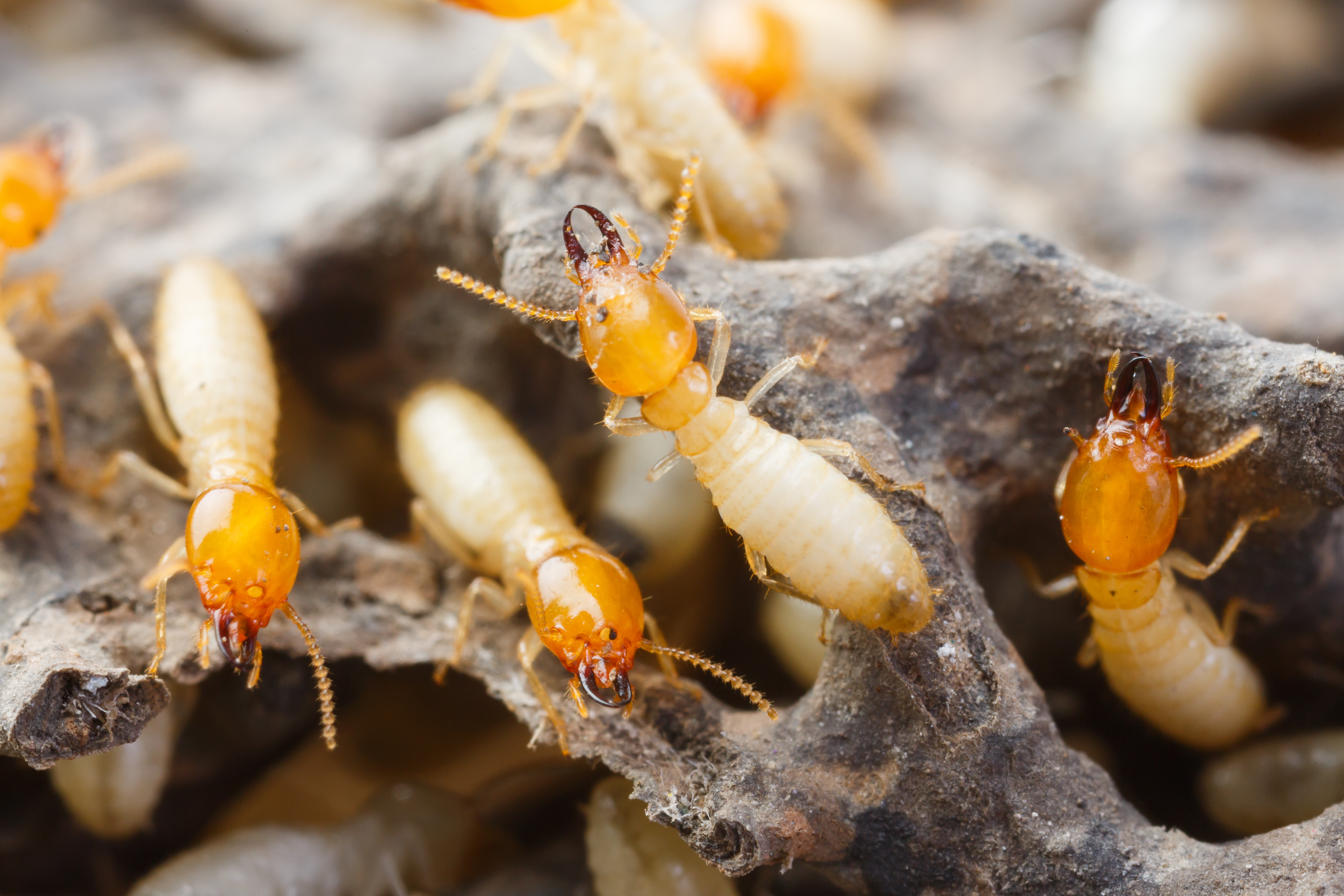Termite Control Homestead Protection: Proactive Solutions for a Termite-Free Home
Termite Control Homestead Protection: Proactive Solutions for a Termite-Free Home
Blog Article
How to avoid Termite Infestation in Your Home: Professional Bug Control Tips
Termite problem can pose a considerable danger to the architectural honesty of your home, creating extensive damage if left unattended. As house owners, recognizing the very early indications of a termite existence is critical in protecting against problems prior to they rise. Past plain discovery, carrying out positive steps to safeguard your residential or commercial property versus these quiet destroyers is similarly essential. By adopting specialist bug control suggestions and incorporating preventative strategies, you can develop a hostile environment that deters termites from attacking your living room. From routine evaluations to tactical construction options, the secrets to strengthening your home versus these durable pests hinge on a mix of caution and notified action.
Identify Early Indicators of Invasion
Alertness is key in finding the very early signs of termite invasion within your home. One typical indication of a termite problem is the presence of discarded termite wings near doors and windowsills.
Furthermore, mud tubes along the structure of your home can show a termite infestation (Termite Control Homestead). These pencil-sized tubes offer shelter for termites as they travel between their nest and a food resource. Hollow-sounding or broken timber, specifically in locations prone to moisture such as basements and attics, might additionally signify a termite infestation. It is important to deal with any type of such indications quickly to prevent further damage to your residential property.
Regular inspections by a pest control specialist can aid find termite activity at an early stage, potentially conserving you from pricey repair services in the future. By remaining alert and proactive, you can protect your home from termite problems and preserve its architectural stability.
Maintain Proper Air Flow and Wetness Levels
To effectively protect your home against termite infestation, maintaining proper ventilation and regulating dampness degrees is necessary in protecting against helpful problems for these harmful bugs. Termites prosper in damp atmospheres, making it essential to keep areas such as cellars, creep areas, and attics well-ventilated and dry. Make sure that vents are unblocked and working effectively to permit adequate airflow, lowering the chance of wetness accumulation. Additionally, deal with any kind of leaks in plumbing, roof coverings, or home windows quickly to prevent water accumulation that brings in termites.
Humidity degrees must be maintained listed below 60% to deter termite task. By taking these precautionary procedures, you can develop a setting that is less hospitable to termites, decreasing the threat of problem and possible damages to your home.
Seal Cracks and Gaps in your house


Inspecting and without delay sealing splits and spaces in your home is a critical step in strengthening its defenses against termite problem. Termites can make use of also the tiniest openings in your house's structure to gain accessibility and create significant damages. Conduct an extensive inspection of both the exterior and interior of your home, paying attention to locations where various building products meet, such as where the foundation fulfills the walls or where wires and pipelines get in the home. Seal any kind of cracks or spaces discovered making use of suitable materials like caulk or sealer. Focus on see page locations vulnerable to moisture buildup, as termites are drawn in to damp settings. Common prone places include around doors and home windows, in published here the structure, and in the attic or basement. By proactively securing these access factors, you create a barrier that can assist stop termites from infiltrating your home and causing expensive devastation. Regular maintenance and alertness in dealing with prospective access points can go a lengthy means in safeguarding your home against termite invasion.
Use Termite-Resistant Products for Construction
When fortifying your home versus termite infestation by sealing voids and splits, it is crucial to take into consideration making use of termite-resistant products during construction. Termite-resistant materials are particularly made to prevent or slow down down termite problems, supplying an included layer of security to your residential or commercial property. These materials are typically treated with chemicals that are poisonous to termites or are naturally resistant to termite strikes.
One typical termite-resistant material is pressure-treated timber, which has been fertilized with chemicals to make it less enticing to termites. Furthermore, utilizing concrete, steel, or masonry products in building can help lower the threat of termite damages as these materials are not susceptible to termite attacks.
It is critical to work very closely with your specialist or builder to make certain that termite-resistant materials are made use of in essential locations prone to termite problem, such as the foundation, framework, and outside wall surfaces. By incorporating termite-resistant materials right into your home construction, you can significantly reduce the chance of termite problems in the future.
Arrange Normal Inspections With Experts
Routine examinations conducted by certified insect control experts are crucial in maintaining a termite-free atmosphere in your house. These specialists have the competence to recognize early signs of termite activity that might go undetected by inexperienced individuals. By scheduling routine assessments, any kind of possible termite infestation can be spotted and attended to without delay, preventing extensive damage why not try these out to your building.

In addition, insect control specialists can supply tailored suggestions to resolve any type of susceptabilities in your home that might bring in termites - Termite Control Homestead. This may consist of advice on wetness control, landscape design practices, and other preventative steps to lessen the risk of invasion. By spending in normal evaluations with specialists, you can proactively protect your home from the expensive problems created by termite infestations
Final Thought
Finally, preventing termite invasions in your house calls for proactive steps such as determining very early indicators of problem, keeping correct ventilation and moisture levels, sealing gaps and cracks, utilizing termite-resistant products, and organizing normal inspections with specialists. By applying these specialist pest control tips, you can safeguard your home from expensive damage triggered by termite invasions.
One typical indication of a termite invasion is the existence of disposed of termite wings near windowsills and doors.To properly guard your home versus termite invasion, preserving appropriate ventilation and controlling moisture levels is important in avoiding conducive conditions for these destructive pests.When strengthening your home versus termite invasion by sealing cracks and gaps, it is necessary to think about making use of termite-resistant products during construction. These products are commonly treated with chemicals that are poisonous to termites or are naturally immune to termite strikes.
By spending in routine inspections with specialists, you can proactively secure your home from the expensive damages created by termite invasions.
Report this page